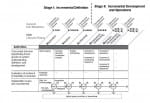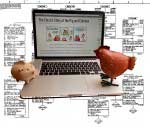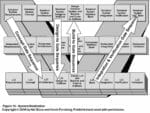The Incremental Commitment Model (ICM) was presented in 2006 in a paper titled Using the Incremental Commitment Model to Integrate System Acquisition, Systems Engineering, and Software Engineering written by Barry Boehm (Spiral Model) and Jo Ann Lane, a Principal at the University of Southern California Center for Systems and Software Engineering. The ICM model emerged primarily […]
Legend of the Chicken and Pig
The Scrum framework consists of Scrum Teams and their associated roles; Time-Boxes, Artifacts, and Rules. Every Scrum team has a ScrumMaster responsible for making sure Scrum practices are followed and impediments to progress removed. The ScrumMaster does not manage the team. Teams are self-organizing with no more than 7 members. There is a Product Owner […]
The Dual Vee
Recognizing insufficiencies with all Waterfall based models including their own Vee-Model, Forsberg and Mooz continued to refine their thesis. They presented a Dual Vee-Model in a 2006 paper titled “The Dual Vee – Illuminating the Management of Complexity.” In the abstract they said: The Waterfall, Spiral, and Vee models are reminder models that guide us […]
US Vee Model
The US Vee-Model was first discussed at a joint conference sponsored by the National Council on Systems Engineering (NCOSE) and American Society for Engineering Management (ASEM) in Chattanooga, TN on October 21–23, 1991. A paper named “The Relationship of System Engineering to the Project Cycle” written by Dr. Kevin Forsberg and Harold Mooz, Co-Principals for […]
Best of the Best Practices
In Chapter 2 of The Ultimate Guide to the SDLC, 12 historical system development models, both agile and waterfall based, are compared as well as one hybrid and one philosophy. The best practices from each model are extracted and extrapolated into a best of best practices model. None of the Waterfall or Agile models provide […]







Recent Comments